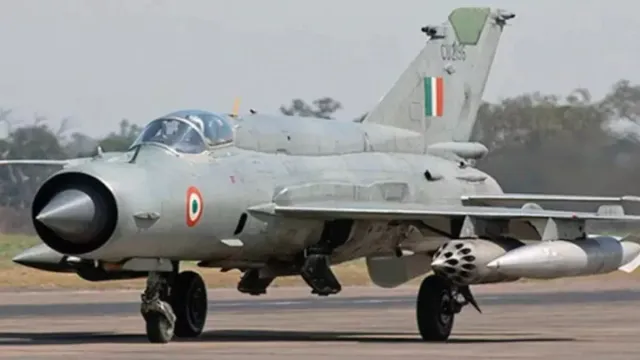- By Priyanka Koul
- Tue, 22 Jul 2025 02:27 PM (IST)
- Source:JND
MiG-21 Fighter Jet: After over six decades of active service, the Indian Air Force’s MiG-21 fighter jet is finally set to retire. The Russian-origin aircraft, once the backbone of India's aerial defence, will be officially decommissioned in a ceremonial event at the Chandigarh Airbase this September, Jagran.com has reported. The farewell marks the end of an era for a jet that has witnessed the highs and lows of India’s combat history — and also courted criticism for its deadly design flaws.
Indian Air Force to phase out the MiG-21 fighter jet by September this year. The squadrons operating the aircraft are currently in Nal air base in Rajasthan. The LCA Mark 1A aircraft would be replacing the MiG-21s in the IAF: Defence officials
— ANI (@ANI) July 22, 2025
The MiG-21 was inducted into the Indian Air Force (IAF) in 1963 and has since participated in almost every major military conflict, including the wars of 1965, 1971, the Kargil War in 1999, and the Balakot air strikes in 2019.
The Journey of the MiG-21
Originally designed by the Soviet Union’s Mikoyan-Gurevich Design Bureau, the MiG-21 is a lightweight, single-seater fighter aircraft. It entered Indian service in 1960, and was capable of flying at speeds of over 2,200 km/h (Mach 2.05) and reaching altitudes of up to 18,000 metres. It could carry both air-to-air missiles and bombs, and quickly became a critical asset for the Indian military.
In the 1971 war, Indian MiG-21s famously shot down Chinese-built Chengdu F-series aircraft, showcasing their strength in dogfights.
ALSO READ: UP Transport Dept Adopts Uttarakhand Model, Recommends Promotions For Long-Service Staff
Why MiG-21 Is Called 'Flying Coffin'?
Despite its achievements, the MiG-21 came to be known for its poor safety record. Originally designed in Russia, the aircraft developed a reputation for frequent crashes. While Russia phased it out in 1985, countries like Afghanistan and Bangladesh also retired it, citing safety risks. In India, however, the aircraft continued to operate leading to many unfortunate incidents.
That’s why it earned the nickname ‘Flying Coffin’ and also ‘Widow Maker’.
One of the key design flaws lies in its cockpit, the pilot’s visibility of the runway is extremely limited, making landings especially dangerous. The jet also tends to descend at a dangerously high speed, giving pilots less time to react in critical moments. MiG-21 helped India assert its air dominance for decades, its outdated design and repeated accidents turned it into one of the most controversial aircraft in the IAF's history.

